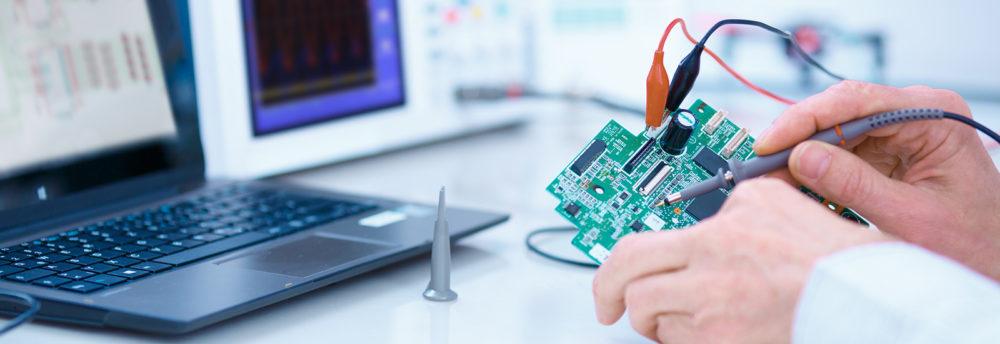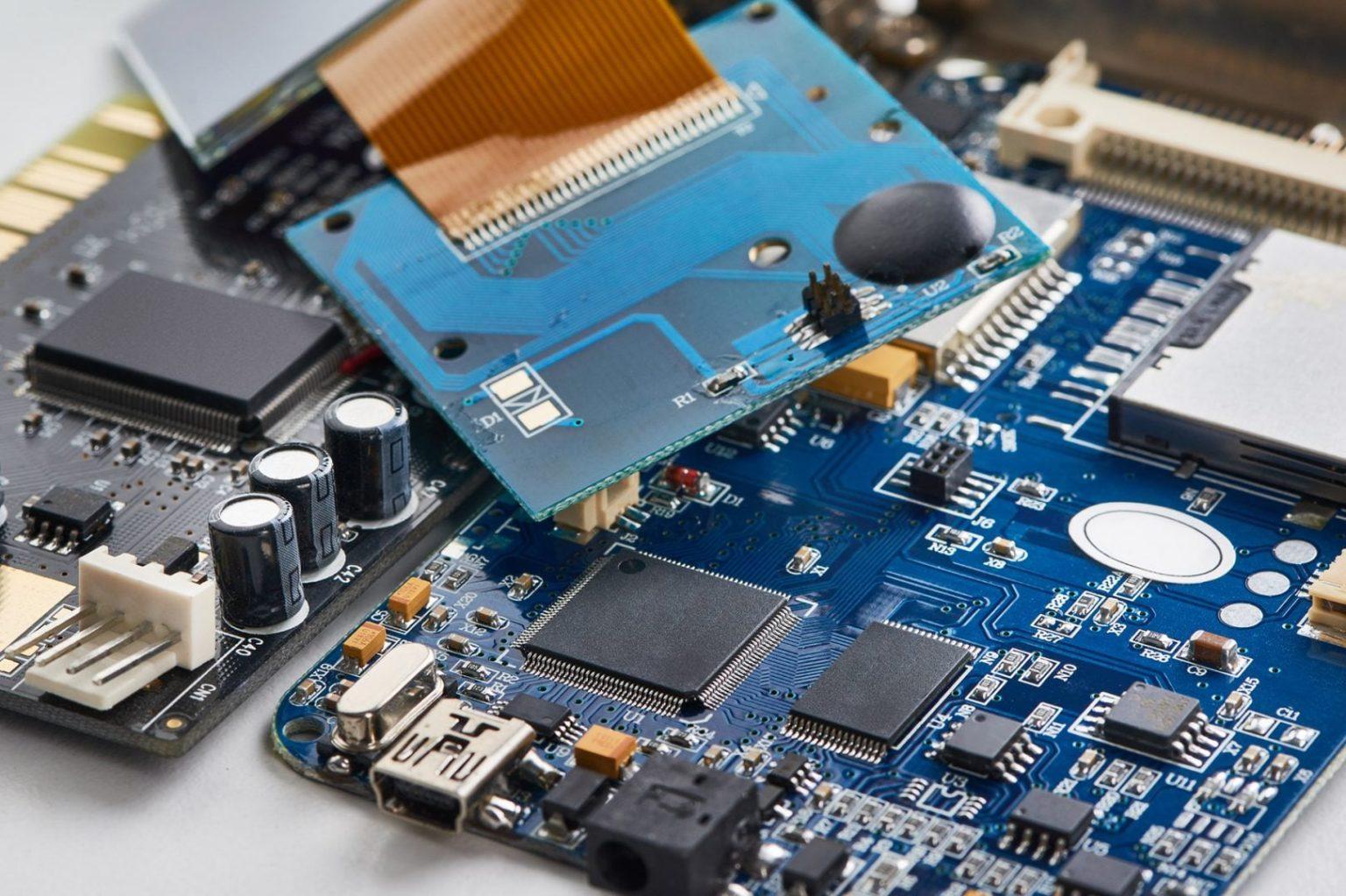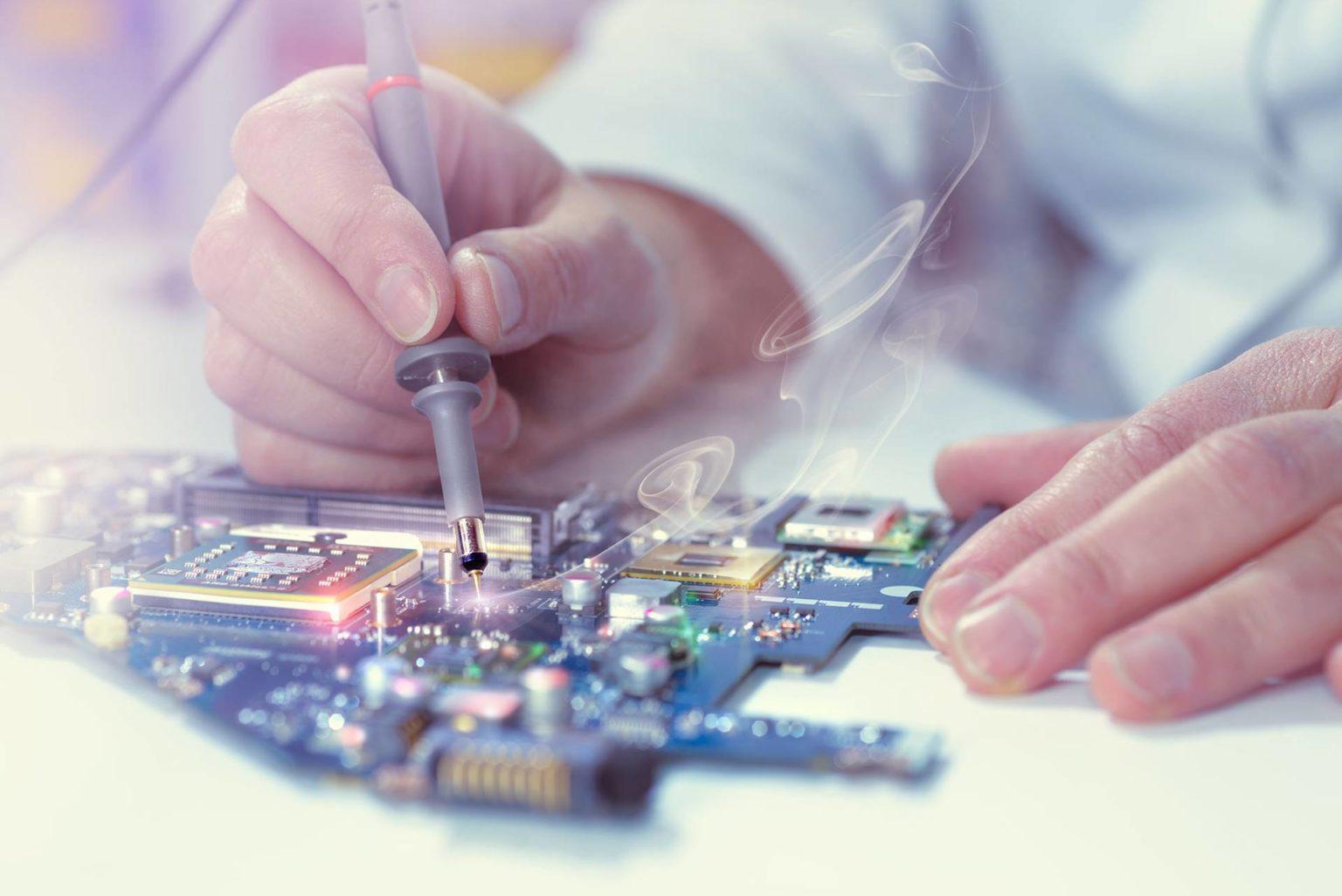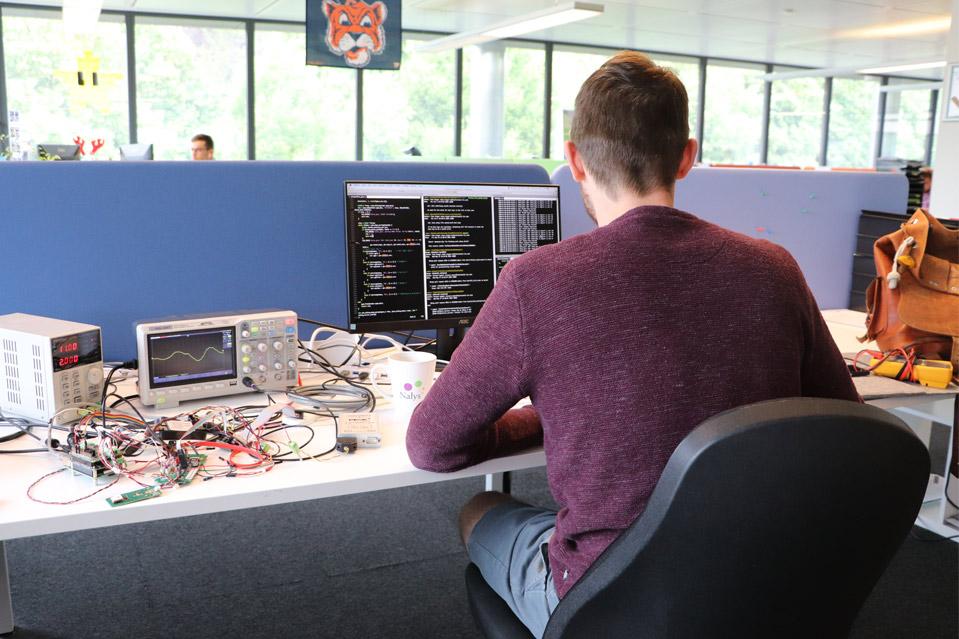Embedded software development: what do you need to know before starting


The design of modern devices has gone far away from sets of relays connected to electro-mechanical buttons and LED lights. Today, the exciting user experience is what everyone expects from any sort of “chipped” equipment. Even the lower-level working staff and ordinary housekeepers would like to operate smart facilities that must be reliable, safe, and user-friendly. Moreover, the present-day hardware can make workflows of drivers, pilots, surgeons, and hospital patients not just easier and more comfortable but literally life-saving. And the very logical algorithms making the hardware run as it runs are backed by embedded solutions.
WHERE WE MEET EMBEDDED SOFTWARE DEVELOPMENT
Embedded software, often referred as to firmware, is the heart of every smart device. Industrial machinery automation, healthcare equipment, control systems for vehicles, IoT devices, consumer electronics, banking, and office appliances, not to mention various computer peripherals all perform their functions due to embedded software.
Embedded solutions differ from ordinary programming products by both operational properties and hardware carriers. It should be capable of performing reliable real-time computing with the hardware having oftentimes quite moderate characteristics in terms of size and power consumption. Various logical circuit boards, microprocessors, and microcontrollers belong to this category.
That’s why embedded developers who know how to deal with processing units of such a sort are relatively rare birds in the software outsourcing segment. The low-level programming with Assembler, C, and even binary code seems to be the major competence of embedded developers. But even so, embedded software/firmware development and software development as such are much alike in terms of the process.
PECULIARITIES OF EMBEDDED SOLUTIONS
Basic system components of any kind of embedded solutions include the following hardware/software units:
- User interface + input/output interfaces
- Processors
- RAM and ROM
- Communication ports and circuit connectors

All embedded systems can be either programmable or non-programmable depending on their functional characteristics. The capabilities of their microcontrollers determine how sophisticated the performance and functionality of the system can be.
Since embedded software apps are oftentimes the constituent elements of some larger systems they must be invulnerable to possible changes in the hardware architecture. The real-time operation of an embedded system should not suffer when some hardware components are changed. Hence, embedded software should be both portable and autonomous at the same time.
Embedded properties are not limited by those two ones, however. What other challenges do embedded developers usually face while creating embedded software projects?
CHALLENGES OF EMBEDDED SOFTWARE AND FIRMWARE DEVELOPMENT
Challenges mean the desired capabilities and must-have features in our context. They are numerous due to a great diversity of the existing embedded solutions in different industries. The most general embedded solution properties are worth mentioning to name a few.
- Errorless durability. It means an ability to work with no service and maintenance for a long time. Only stable behavior, in any event, can eliminate operational risks.
- Reliability. Either mission-critical solutions in the space industry or life-saving tools in modern healthcare all require a special level of safety from embedded software. Such a specific safety implies the exceptional engineering expertise to be inherent in embedded developers when they move through the entire software development life cycle. Meeting strict reliability requirements imposes extra obligations on developers regarding the quality of both coding and testing.
- Deployment velocity. The commercial success of any product having embedded software depends on both the duration of the development life cycle (aka time-to-market) and a payback period of the finished solutions. That’s why flexible integration into the ever-evolving development environment is what embedded solutions require from component designers. Achieving both fast releases and numerous future updates simultaneously is a tough task for embedded developers.
- Form-factor limitations. Extremely low power consumption, small physical size, tiny cache memory, and a zero replacement cycle constitute typical properties of circuits with embedded software. Besides, manufacturing volumes with tens of thousands of standardized units make any post-production re-configuration of embedded solutions barely possible.
- Ecosystem compatibility. Either over-the-air firmware updates or any other sort of administrative support should be available in the majority of embedded software apps. Such features significantly impact the adaptability of embedded software projects that have multi-layer ecosystems based oftentimes on numerous 8-bit chip families.
SPECIFIC SKILLS OF EMBEDDED DEVELOPERS
Stats claim that over 75 billion IoT devices will appear by 2025 globally. Note, however, that the IoT sector does not limit the entire chip-driven electronics market. Of course, the large-scale mass production of microprocessors implies only dozens (or, at best, hundreds) of brands. But the scale and scope of the very phenomenon raise the question about the number of embedded software and firmware development providers to be needed.
Leaving aside a quantitative aspect of the issue, let’s focus on the qualitative characteristics of embedded software providers. What should they be able to provide to meet the requirements of the modern market?

Diverse Connectivity
Wi-Fi, Bluetooth, Edge, Ethernet, and other channels that provide connectivity between chip-powered devices should be more than familiar to those who develop embedded solutions. Deep connectivity expertise, inter alia, implies understanding how to use and combine such protocols as TSP/IP, COAP, UDP, etc. The channels and protocols require different development stacks. Hence, it is not enough to formally select some technology for a particular project. True professionals should be able to intersect, rearrange, and rebuild any relevant stack at the lowest possible level.
Remote Updates
The mass character of embedded solutions eliminates the opportunity to make the end-users visit a special website for some firmware updates to be downloaded. The number of everyday smart deployments over the world demands user-free remote updates executed over-the-air. Embedded software providers should perform quite a special sequence of actions to fulfill the task.
To release a well-tested firmware update in due time is just the first step to go. It is also necessary to validate a trusted source from which the updates should be remotely delivered to the users’ devices. Saving and running the updates on the user devices go next. Besides, rolling back to a previous firmware if something goes wrong is to be among the available possibilities.
Emergency Repair & Debugging
The debugging issue is becoming tougher in the embedded software sector. The thing is that numerous open-source solutions available on the present-day market can run on various hardware in principle. The solutions are popular since they are free. Various open-source solutions used for embedded software projects induce unexpected behavior of the final products oftentimes. This is about the integration of different pieces of code having no pre-engineered formulation.
And this is one of the main reasons why embedded developers have to spend more and more time debugging such a hodgepodge created with ready-to-use open-source solutions that run on non-native hardware. Usually, it happens in an emergency mode when embedded software apps are installed in mass products, operation of which must not be interrupted.
Disruptive Technologies
Many innovative development technologies of recent times are so compelling that embedded software solutions may not pass them by even if inherent hardware limitations make the technologies barely acceptable. Artificial intelligence, machine learning, and blockchain belong to that category to name a few.
The majority of disruptive innovations in software development require powerful processors along with large amounts of memory. Hence, embedded developers face many problems while trying to combine the innovations with moderate system characteristics of embedded solutions. It seems there is a certain gap between the rapidly evolving software development and the pace of change in the microchip environment. The contemporary embedded software providers have to demonstrate extraordinary skills in low-level programming to create effects similar to what ordinary developers can easily achieve with fancy frameworks.

CONCLUSION
It would be legitimate to claim that embedded software development is a standalone activity in the realm of programming. Even though the lion share of modern electronic devices is chip-driven the number of embedded developers having sufficient skills to work with processing units at the level of binary code leaves much to be desired.
The search for professional embedded software providers is confounded by both the form-factor limitations of hardware and the diversity of industries where embedded software solutions take place.
Sirin Software is here to help you overcome constraints in embedded software and firmware development of any complexity. Our in-depth expertise in low-level programming along with hardware engineering competencies can make any desired embedded solution come true.
Contact us for the best-in-class embedded software development service.